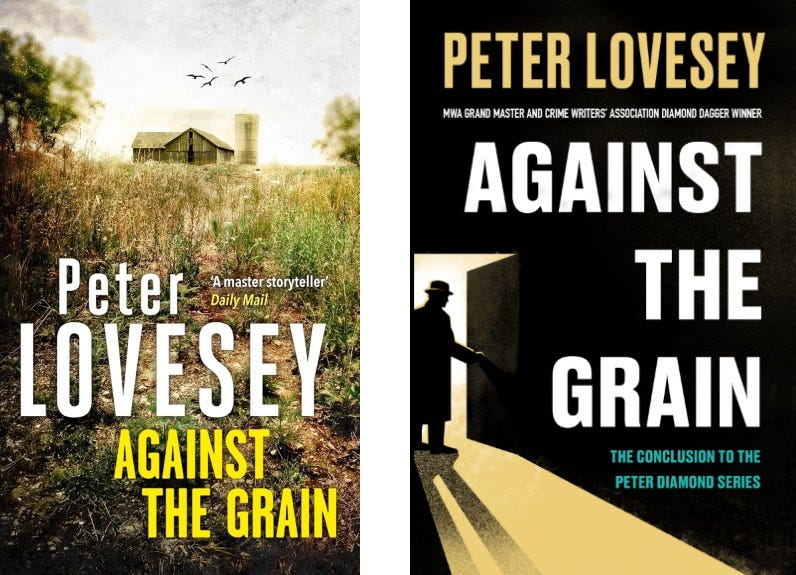REMEMBER, REMEMBER
MY BOOK IN NOVEMBER
Against The Grain is released in the UK on 17 November and the US edition follows soon after on 3 December.
This final book in the Peter Diamond series is already gathering laurels. It was picked by the Crime Writers Association and the Crime Readers Association (www.thecra.co.uk) as their Read of the Month for November.
In America, it turned me into an elderly coverboy in Publishers Weekly.
Their starred review reads: ‘Lovesey concludes his long-running series featuring Bath detective Peter Diamond with a bang, delivering an ingenious fair-play whodunit set in the small English village of Baskerville as the annual harvest festival approaches. While Diamond contemplates retirement, his former colleague, Julie Hargreaves, summons him to Baskerville to investigate a potential miscarriage of justice. Claudia Priest, heir to a local dairy farm, threw a party in which her male colleagues were tasked with finding a hidden garter. Claudia’s ex-boyfriend, art dealer Roger Miller, tracked the item down inside a grain silo, but when he reached for it, the surface of the grain collapsed, and he was sucked under and suffocated. Though Claudia insisted the garter was placed there by somebody else, she was convicted of manslaughter – but Julie’s instincts tell her the killer is still at large.
Intrigued, Diamond begins interviewing Julie and Claudia’s neighbours, leading him to try out a variety of identities before tracking the culprit to the annual festival.
Lovesey derives genuine emotion from Diamond’s potential retirement, and his golden-age style plotting is as tight as ever. This sends the series out on a high note.’
WHAT ELSE HAVE I BEEN UP TO?
You may already know that I have a sideline as a historian of athletics. October was Black History Month, so I wrote a booklet called Black Athletes In Britain: The Pioneers celebrating long-forgotten runners from more than a century ago.
Athletics is one of the most inclusive of modern sports, yet in the eighteenth century black runners, walkers and jumpers were so rarely seen that they were identified in the press only by their colour.
Sports such as boxing, cricket and football can list their black players from the beginning. Athletics histories go back no further than Arthur Wharton, the champion sprinter in 1886 who was better known as a footballer.
This new study for Black History Month fills the void, rediscovering named athletes as far back as Levi Baldwin in 1805, whose reported time of 9.2 seconds for 100 yards was faster than Wharton, Jesse Owens or Linford Christie. If authentic, Baldwin would have been a good match for Usain Bolt. The stories of thirty-six pioneers from Baldwin to the international sprinter Ethel Scott in the 1920s are entertaining and surprising, as a glance through the index promises. Who could resist the Female Deerfoot; the Go-As-You-Please Man: the Black Trumpeter; the Ebony Phenomenon; the Retrograding Pedestrian; or the Man Who Grappled with Ivan the Terrible? The account of Jack London, double Olympic Medallist from 1928, “the outstanding example of a talent unfulfilled,” reveals elements of his personality that explain why he was the despair of everyone who tried to coach him.
Obtainable from the NUTS website at £8 in the UK and £10 elsewhere, including postage.
AND FINALLY…
In case you were wondering if this newsletter was written by a robot, here’s a recent shot of me alive and clearing out my shed. Well, not quite . . . If you look really closely inside the shed you may see that the heavy work was done by a robot in the shape of my son-in-law. Thanks, Nigel!
Best,
Peter
peterlovesey.com






